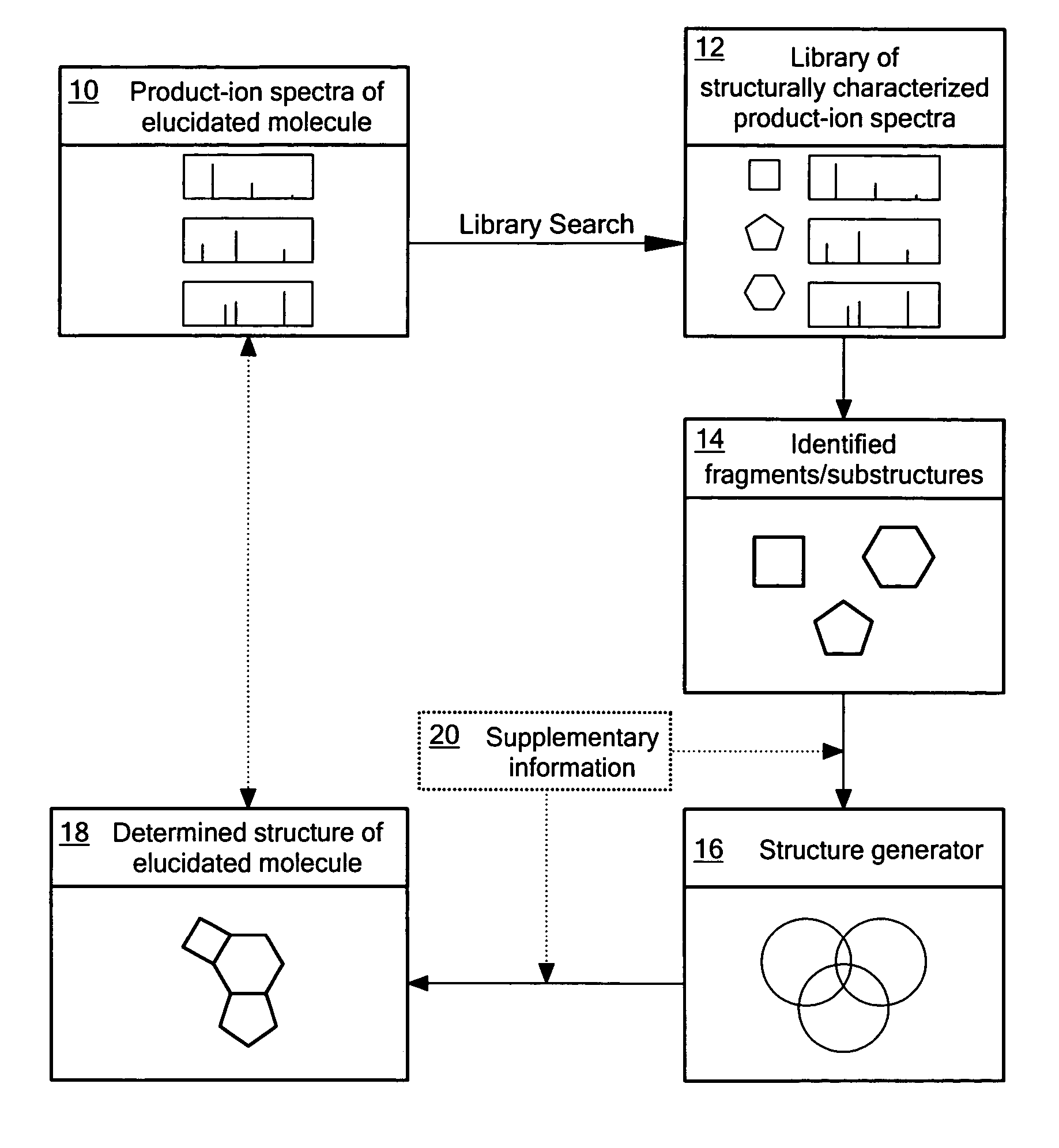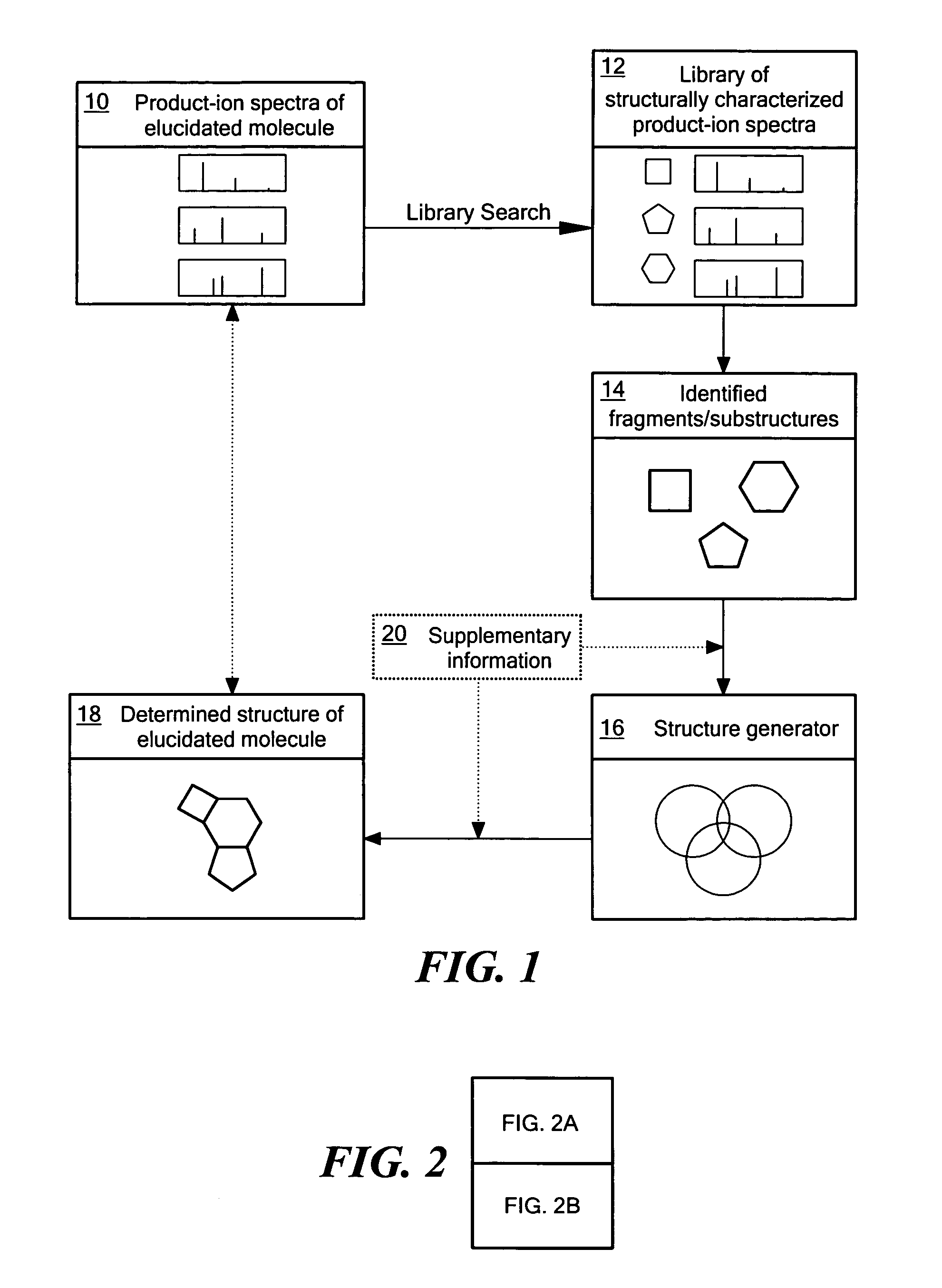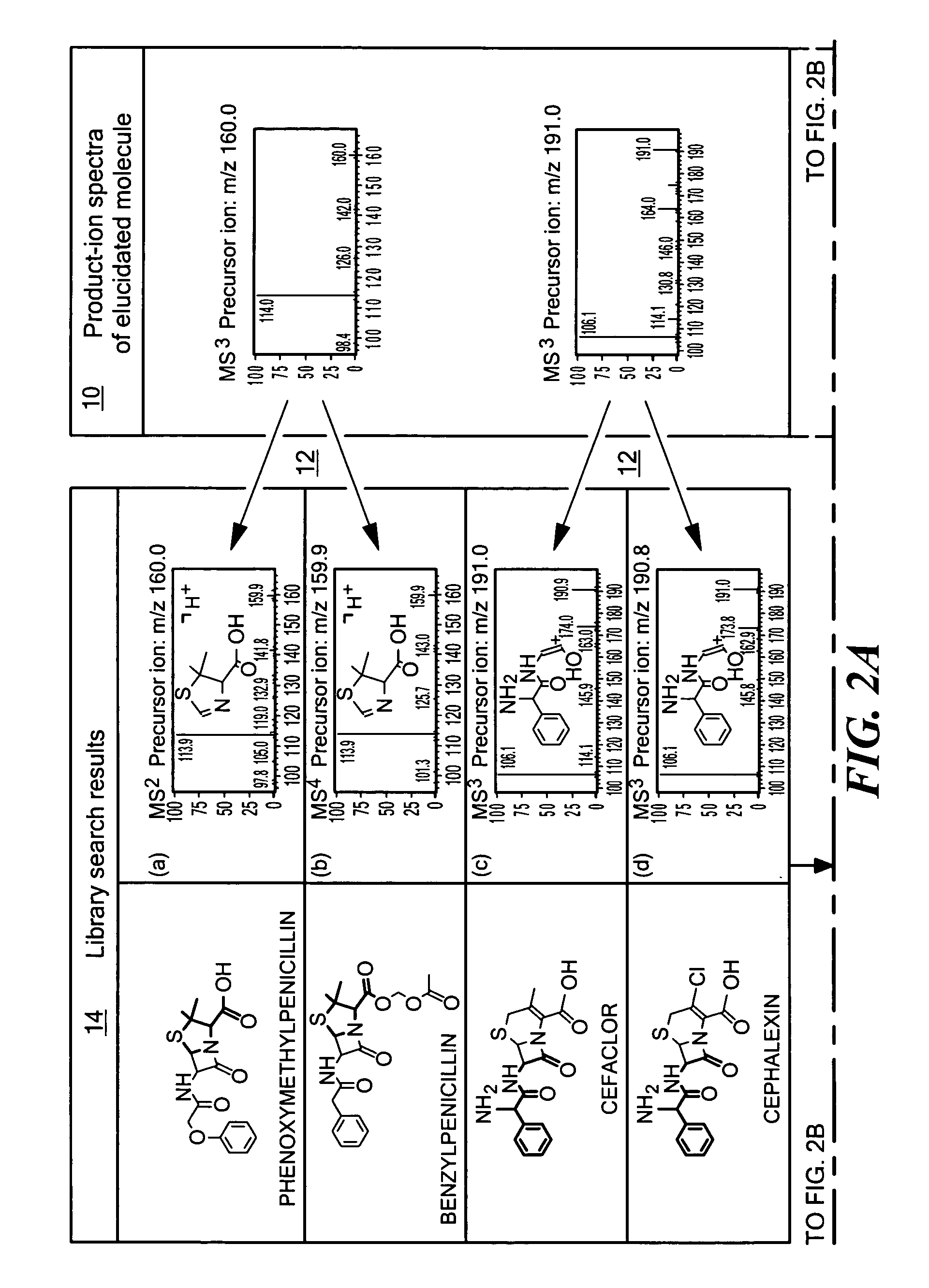Determination of molecular structures using tandem mass spectrometry
a technology of molecular structure and mass spectrometry, which is applied in the direction of instruments, chemical methods analysis, proteomics, etc., can solve the problems of difficult or even impossible to identify a substructure from a given mass spectrum using such a method, and structurally highly similar compounds often do not exhibit uniform fragmentation patterns, so as to achieve continuous improvement of the structure or substructure determination process
- Summary
- Abstract
- Description
- Claims
- Application Information
AI Technical Summary
Benefits of technology
Problems solved by technology
Method used
Image
Examples
Embodiment Construction
[0016]As implied by quasi-equilibrium theory, the probabilities of the various possible decomposition product-ions of an ion depend only on its structure and internal energy and not on the method used for the ionization, or on the structure of the precursor for, or formation mechanism of, the ion undergoing decomposition (McLafferty and Turecek, 1993). Thus, the spectra resulting from the isolation, activation and subsequent dissociation of structurally equivalent ions exhibit analogous fragmentation patterns, predominantly independent of tandem stage. The degree of spectral analogy between the product-ions of two structurally equivalent ions undergoing decomposition is dependent on the differences in sample preparation and experimental conditions. Analogous spectra can be defined as two spectra that closely reflect the correspondence of m / z values and their relative intensity ratios in observed spectral peaks. The spectral analogy is usually quantitatively expressed as a single val...
PUM
| Property | Measurement | Unit |
|---|---|---|
| structure | aaaaa | aaaaa |
| tandem mass spectrometry | aaaaa | aaaaa |
| spectra | aaaaa | aaaaa |
Abstract
Description
Claims
Application Information
 Login to View More
Login to View More - R&D
- Intellectual Property
- Life Sciences
- Materials
- Tech Scout
- Unparalleled Data Quality
- Higher Quality Content
- 60% Fewer Hallucinations
Browse by: Latest US Patents, China's latest patents, Technical Efficacy Thesaurus, Application Domain, Technology Topic, Popular Technical Reports.
© 2025 PatSnap. All rights reserved.Legal|Privacy policy|Modern Slavery Act Transparency Statement|Sitemap|About US| Contact US: help@patsnap.com



